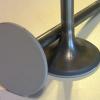Hello, new to the forum but there seems to be a lot of great info here.
I own a 1985 HJ75 that has been fitted with a 6.5 Optimizer running a turbo and intercooler. Purchased it already converted from the previous owner who estimated it had done around 70000kms.
Couple of questions, my oil pressure sits somewhere around 10-15psi at a hot idle and when cruising at approx. 2000rpm it sits around 30-35psi. Is this ok or does it indicate an issue?
The second question may be related as I have noticed a small oil leak from the intercooler plenum and when I pulled it off today it appears oil has been leaking from the plenum gaskets, however the inside of the intercooler and the rocker covers looks pretty clean.
https://imgur.com/GVUEftQ.jpg
Anyone have an idea what may be causing the oil leak? The bolts on the plenum were not torqued particularly tightly at all but I'm aware there really should be any oil on that side of the intake. There is an oil catch can fitted to the engine already.
Any ideas would be greatly appreciated as I've reached the limit of my knowledge on this. Thanks!







 Reply With Quote
Reply With Quote






